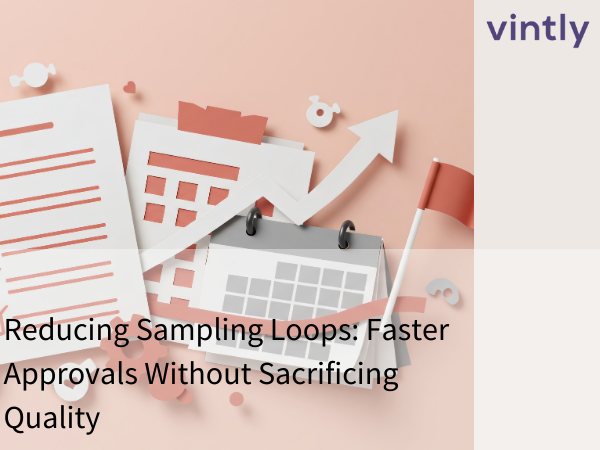A supply chain is a complex web of interconnected entities, and mapping it is crucial to ensure a smooth and efficient flow of goods and services. However, most organizations only map their tier 1 suppliers, which leaves them vulnerable to risks that may arise from their lower-tier suppliers. In this article, we will explore the importance of mapping suppliers beyond tier 1 and the steps to follow to achieve this.
Tier 1 suppliers are the ones that directly supply goods or services to the organization. However, these suppliers often rely on their own suppliers, and these suppliers, in turn, rely on others, creating a multi-tiered supply chain. Failing to map these lower-tier suppliers can lead to several risks that may affect the organization's operations, reputation, and revenue.
The purpose of this article is to highlight the importance of mapping suppliers beyond tier 1 in the supply chain and provide a step-by-step guide on how to achieve this. This is ever more so important with new ESG requirements coming into play in Europe and the growing need that customers demand transparency regarding the goods they purchase. We will also explore the benefits of mapping suppliers beyond tier 1, the challenges, and best practices to follow.
“All too often, companies rely on first-tier suppliers managing the lower tiers, with the result that buyers have no idea who those lower-tier suppliers are and what measure of compliance they hold, this is not sustainable”
Quote source: https://industrystar.medium.com/5-steps-for-mapping-sub-tier-suppliers-to-capture-cost-savings-985fb963e9ec
So, supply chain mapping is the process of identifying and visualizing all the entities involved in the supply chain, from raw materials to the end product. It involves mapping the flow of goods, services, and information from suppliers to customers.
Supply chain mapping offers several benefits, including:
1. Improved visibility: Mapping the supply chain provides visibility into the entire process, making it easier to identify potential risks and opportunities for optimization.
2. Enhanced collaboration: Mapping the supply chain encourages collaboration between suppliers, making it easier to coordinate activities and improve communication.
3. Improved efficiency: Supply chain mapping enables organizations to optimize their processes, reducing costs and improving efficiency.
Why Map Suppliers Beyond Tier 1?
Risks Associated with Tier 1 Suppliers
Failing to map suppliers beyond tier 1 can expose organizations to several risks, including:
1. Supply chain disruptions: A disruption in one of the lower-tier suppliers can affect the entire supply chain, leading to delays and increased costs.
2. Quality issues: Lower-tier suppliers may not have the same quality standards as the tier 1 suppliers, leading to quality issues that may affect the end product.
3. Reputation damage: If a lower-tier supplier is involved in unethical or illegal practices, it can damage the organization's reputation.
4. Build a network: build a network of trustworthy suppliers for your manufacturing process. Nominate tier 2 and 3 suppliers for tier 1 to use. Establish direct relationships with these suppliers, not only through your tier 1 supplier.
Importance of Mapping Tier 2 and Beyond Suppliers
Mapping tier 2 and beyond suppliers can help organizations:
1. Identify potential risks: Mapping lower-tier suppliers can help organizations identify potential risks and take proactive measures to mitigate them.
2. Improve supplier relationships: Mapping lower-tier suppliers can help organizations build stronger relationships with them, leading to better collaboration and communication.
3. Optimize processes: Mapping the entire supply chain enables organizations to optimize their processes, reducing costs and improving efficiency.
4. Create product passport: track all the steps that the product goes through to become an assembled product. Track not only the location but quality and standard at each of those facilities. This is also powerful information to disclose to the end-consumer.

Photo Source: https://www.commonobjective.co/article/why-and-how-to-map-your-supply-chain
The following are the steps to follow when mapping suppliers beyond tier 1:
1. Identify the Suppliers: Identify all the suppliers involved in the supply chain, including the lower-tier suppliers. Start off by mapping which suppliers work together. As a second step, this may need to be done down to article level and can be a tedious process.
2. Collect Data and Information: Collect data and information on the lower-tier suppliers, including their location, products or services, and any potential risks.
3. Analyze the Data: Analyze the data to identify potential risks and opportunities for optimization.
4. Create a Map: Create a visual map of the entire supply chain, including all the suppliers and their relationships.
Challenges of Mapping Suppliers Beyond Tier 1
The following are the challenges of mapping suppliers beyond tier 1:
1. Lack of Transparency: Lower-tier suppliers may not be willing to share information, making it difficult to map the entire supply chain. When working with a new supplier, incorporate this in your agreement, discuss it with them so they understand the importance of collecting the information.

Photo source: https://www.resilinc.com/blog/multi-tier-mapping-vs-ai-mapping/
2. Limited Resources: Mapping the entire supply chain requires significant resources, including time and money. It also requires knowledge resources on how to mapping the supply chain and negotiating with suppliers to receive the information.
3. Complexity of the Supply Chain: The supply chain is a complex web of interconnected entities, and mapping it can be challenging due to its complexity. High assortment, hundreds of suppliers, last minute changes and delays will make it difficult to keep the mapping intact.
Best Practices for Mapping Suppliers Beyond Tier 1
1. Collaboration with Suppliers: Collaborate with suppliers to gather information and build stronger relationships. Again, make sure to include requirements of transparency and data collection regarding each item in the contract agreement with suppliers. Keep them informed of new regulations in the country the company sell’s in.
2. Collaborate internally: Ensure the organization is on the same page regarding mapping and transparency. Mapping suppliers all comes down to the product, the design and product development team should reinforce to the supplier the importance of collecting the data at the team of concept, through proper bill of material documentation and selection of materials.
3. Use of Technology: Use technology, such as supply chain mapping software, to streamline the process and improve accuracy and track changes. Explore utilizing block chain in order to track items in real time or AI to handle part of the mapping.
4. Continuous Improvement: Continuously review and update the supply chain map to ensure it remains accurate and up-to-date. This may require a team to be built within the supply chain team, with support from ESG and product development team.
Mapping suppliers beyond tier 1 is crucial to ensure a smooth and efficient flow of goods and services in the supply chain. It enables organizations to identify potential risks and opportunities for optimization, build stronger relationships with suppliers, and improve efficiency. While there are challenges, following best practices and using technology can help organizations overcome them and achieve an accurate and up-to-date supply chain map.
.png)


